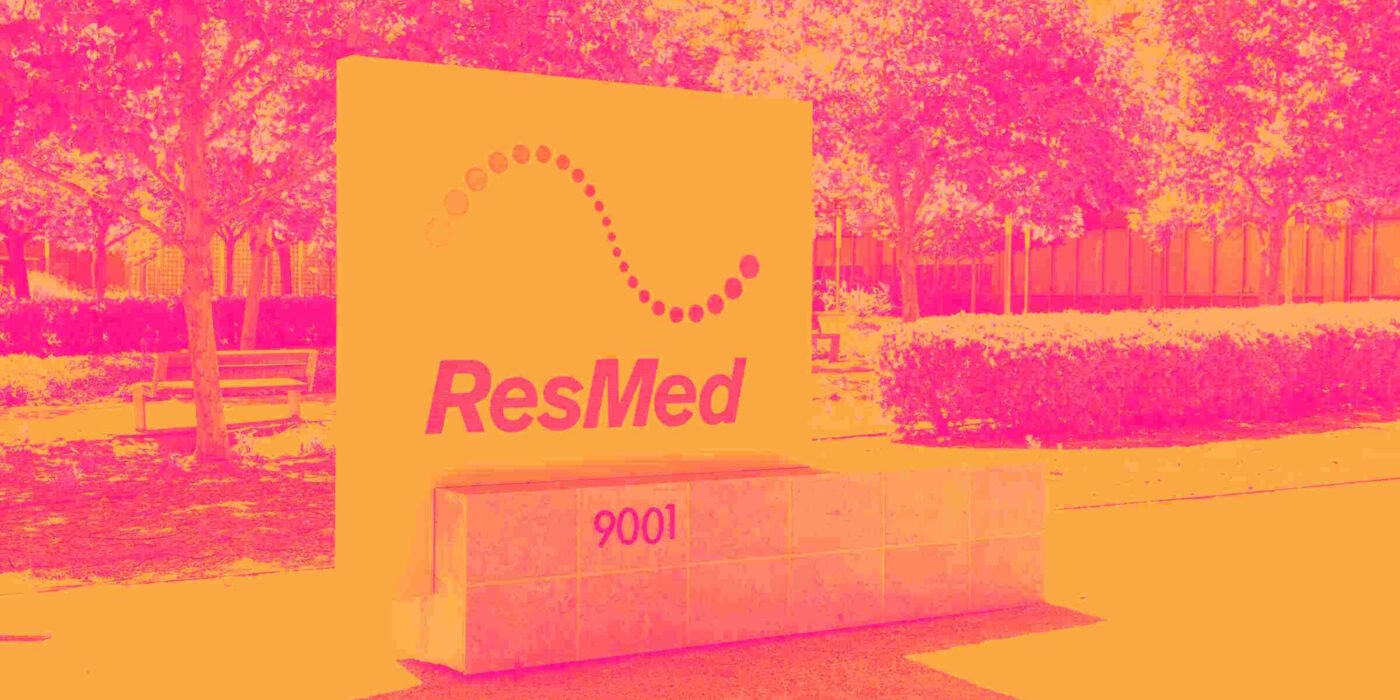
Medical device company ResMed (NYSE:RMD) beat Wall Street’s revenue expectations in Q2 CY2025, with sales up 10.2% year on year to $1.35 billion. Its non-GAAP profit of $2.55 per share was 3% above analysts’ consensus estimates.
Is now the time to buy ResMed? Find out by accessing our full research report, it’s free.
ResMed (RMD) Q2 CY2025 Highlights:
- Revenue: $1.35 billion vs analyst estimates of $1.33 billion (10.2% year-on-year growth, 1.3% beat)
- Adjusted EPS: $2.55 vs analyst estimates of $2.48 (3% beat)
- Adjusted EBITDA: $542.9 million vs analyst estimates of $494.7 million (40.3% margin, 9.8% beat)
- Operating Margin: 33.7%, up from 31.2% in the same quarter last year
- Free Cash Flow Margin: 37.7%, up from 33.9% in the same quarter last year
- Constant Currency Revenue rose 9% year on year (10% in the same quarter last year)
- Market Capitalization: $40.61 billion
“Our strong finish to fiscal year 2025 reflects ongoing momentum across our business, driven by robust global demand for our market-leading sleep and breathing health devices, as well as our expanding digital health ecosystem,” said Resmed’s Chairman and CEO, Mick Farrell.
Company Overview
Founded in 1989 to address the then-underdiagnosed condition of sleep apnea, ResMed (NYSE:RMD) develops cloud-connected medical devices and software solutions that treat sleep apnea, COPD, and other respiratory disorders for home and clinical use.
Revenue Growth
A company’s long-term sales performance is one signal of its overall quality. Any business can put up a good quarter or two, but many enduring ones grow for years. Luckily, ResMed’s sales grew at a decent 11.7% compounded annual growth rate over the last five years. Its growth was slightly above the average healthcare company and shows its offerings resonate with customers.
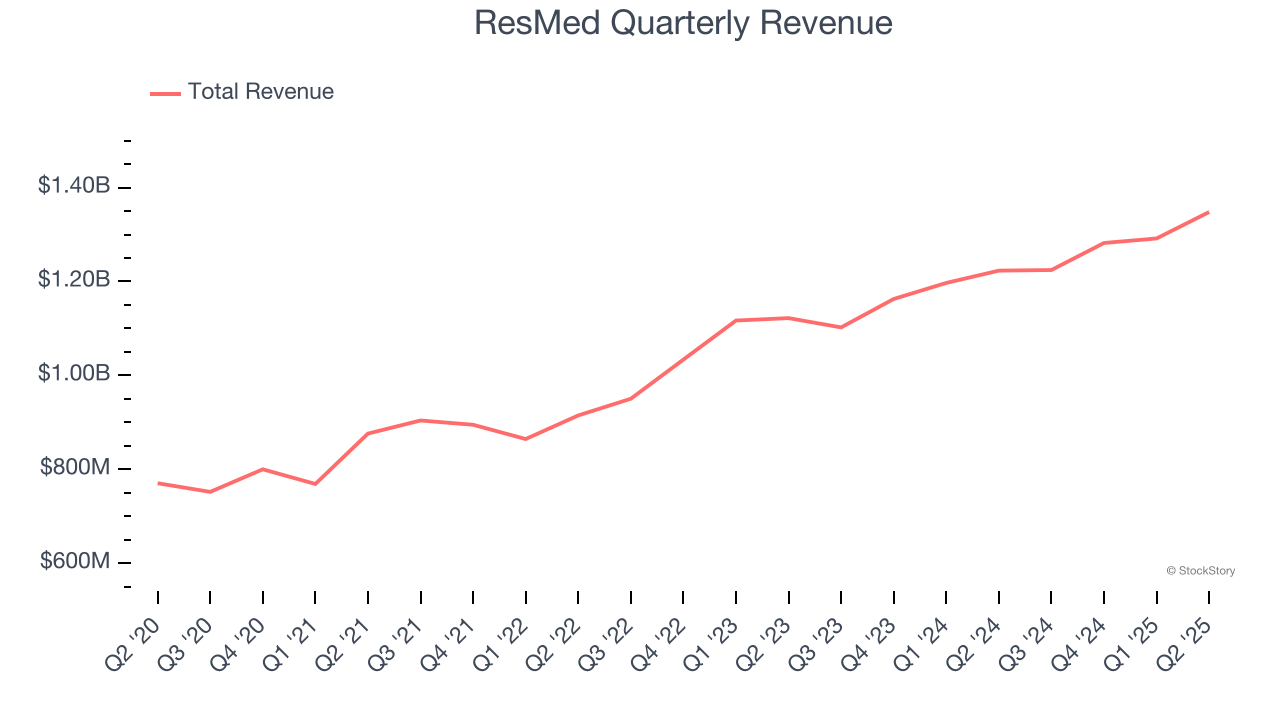
We at StockStory place the most emphasis on long-term growth, but within healthcare, a half-decade historical view may miss recent innovations or disruptive industry trends. ResMed’s annualized revenue growth of 10.4% over the last two years is below its five-year trend, but we still think the results were respectable. 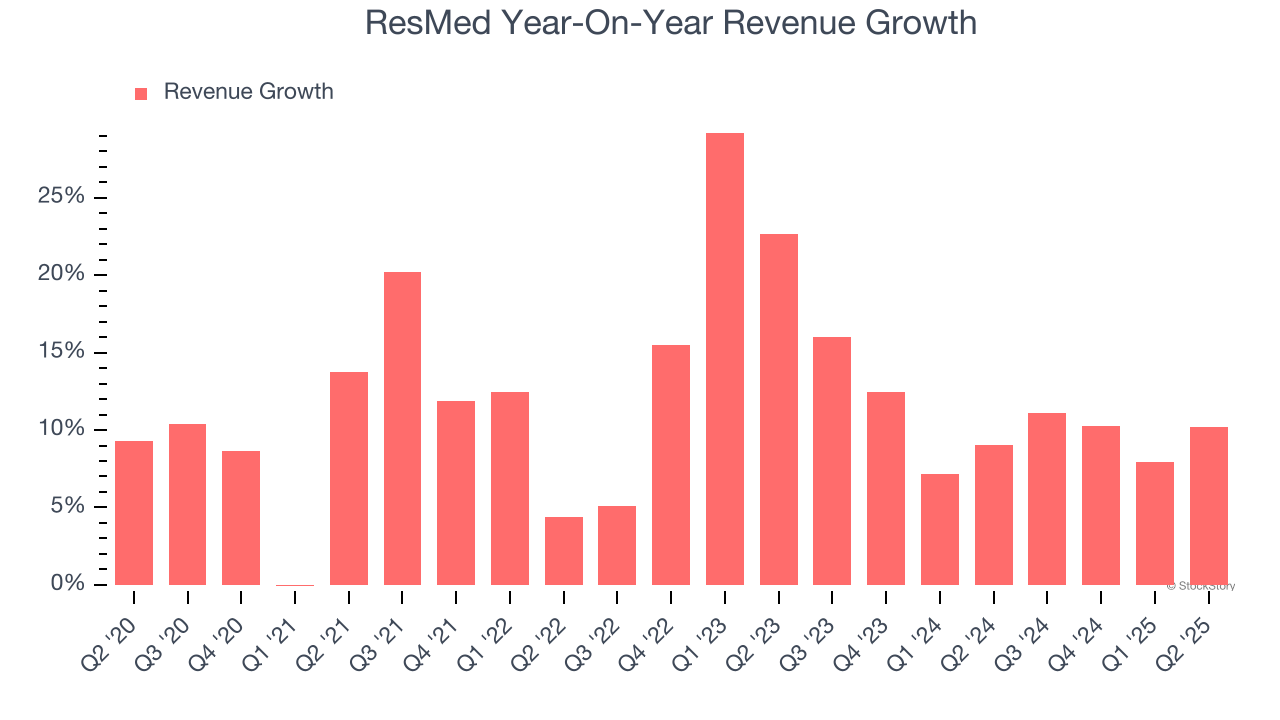
ResMed also reports sales performance excluding currency movements, which are outside the company’s control and not indicative of demand. Over the last two years, its constant currency sales averaged 10.3% year-on-year growth. Because this number aligns with its normal revenue growth, we can see that ResMed has properly hedged its foreign currency exposure. 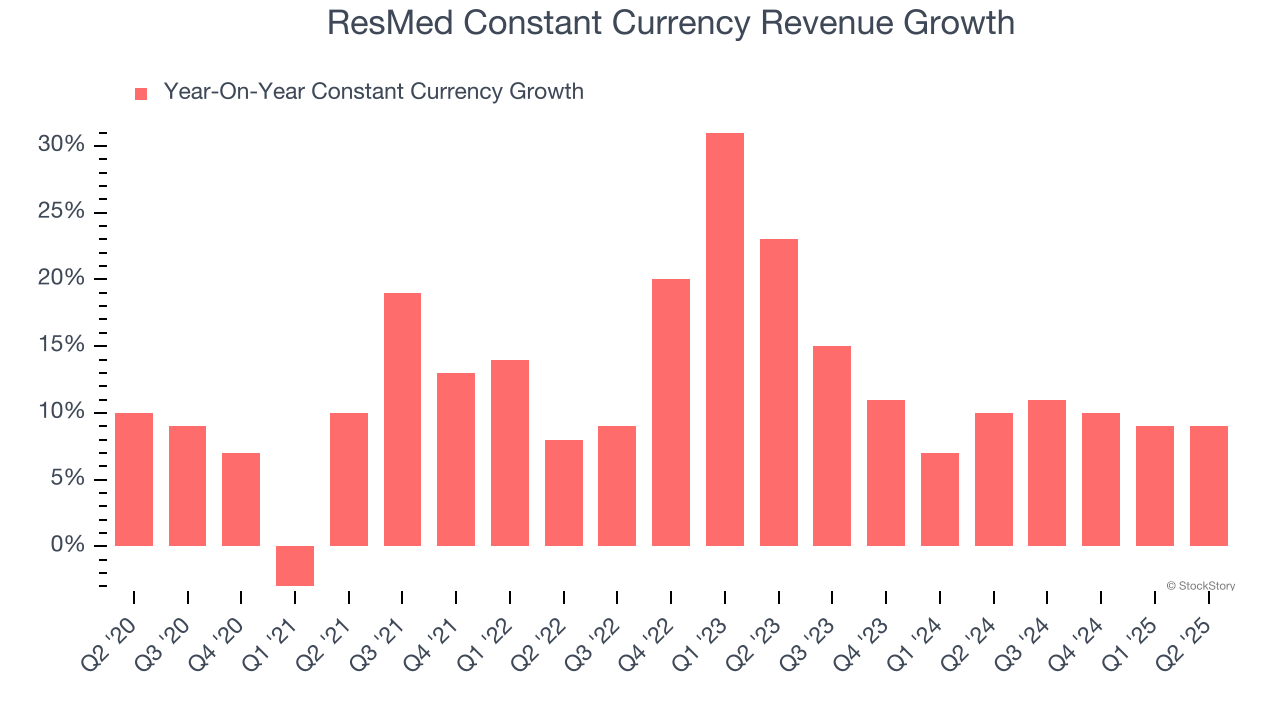
This quarter, ResMed reported year-on-year revenue growth of 10.2%, and its $1.35 billion of revenue exceeded Wall Street’s estimates by 1.3%.
Looking ahead, sell-side analysts expect revenue to grow 8.1% over the next 12 months, a slight deceleration versus the last two years. Despite the slowdown, this projection is noteworthy and suggests the market is forecasting success for its products and services.
Today’s young investors won’t have read the timeless lessons in Gorilla Game: Picking Winners In High Technology because it was written more than 20 years ago when Microsoft and Apple were first establishing their supremacy. But if we apply the same principles, then enterprise software stocks leveraging their own generative AI capabilities may well be the Gorillas of the future. So, in that spirit, we are excited to present our Special Free Report on a profitable, fast-growing enterprise software stock that is already riding the automation wave and looking to catch the generative AI next.
Operating Margin
ResMed has been an efficient company over the last five years. It was one of the more profitable businesses in the healthcare sector, boasting an average operating margin of 29%.
Analyzing the trend in its profitability, ResMed’s operating margin rose by 4.5 percentage points over the last five years, as its sales growth gave it operating leverage. This performance was mostly driven by its recent improvements as the company’s margin has increased by 5.9 percentage points on a two-year basis. These data points are very encouraging and shows momentum is on its side.
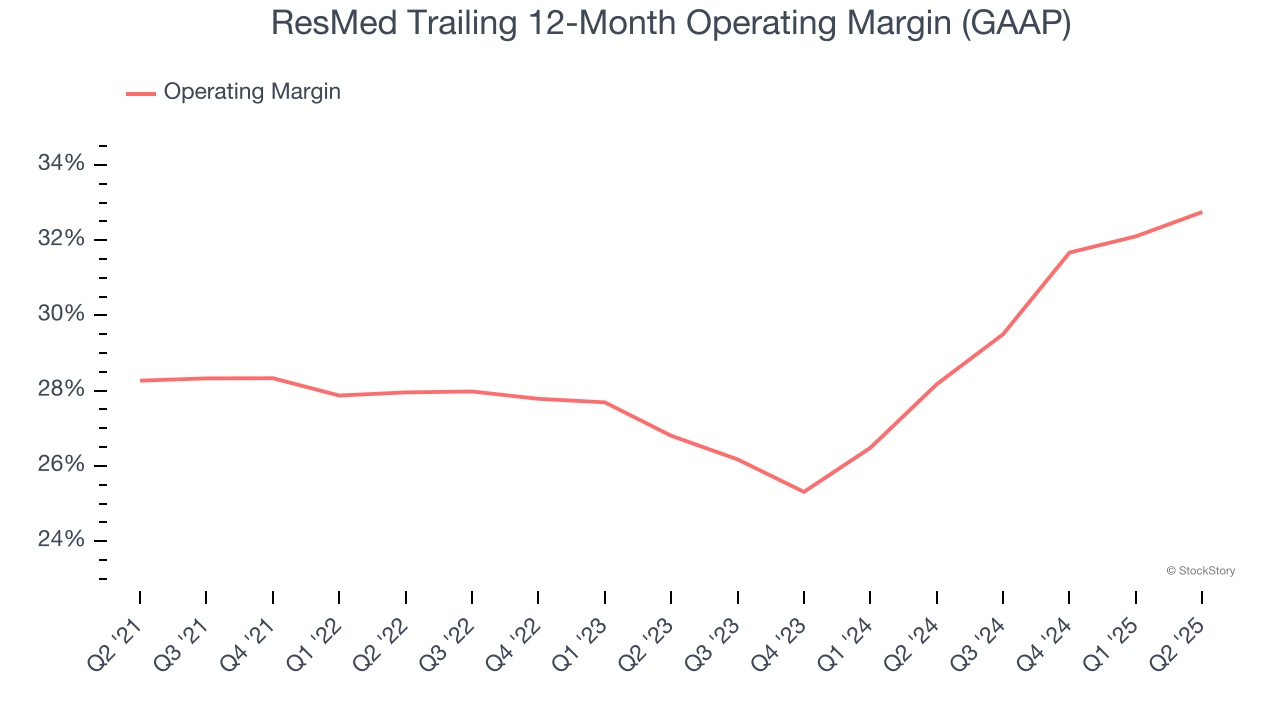
This quarter, ResMed generated an operating margin profit margin of 33.7%, up 2.6 percentage points year on year. This increase was a welcome development and shows it was more efficient.
Earnings Per Share
Revenue trends explain a company’s historical growth, but the long-term change in earnings per share (EPS) points to the profitability of that growth – for example, a company could inflate its sales through excessive spending on advertising and promotions.
ResMed’s EPS grew at a spectacular 14.9% compounded annual growth rate over the last five years, higher than its 11.7% annualized revenue growth. This tells us the company became more profitable on a per-share basis as it expanded.
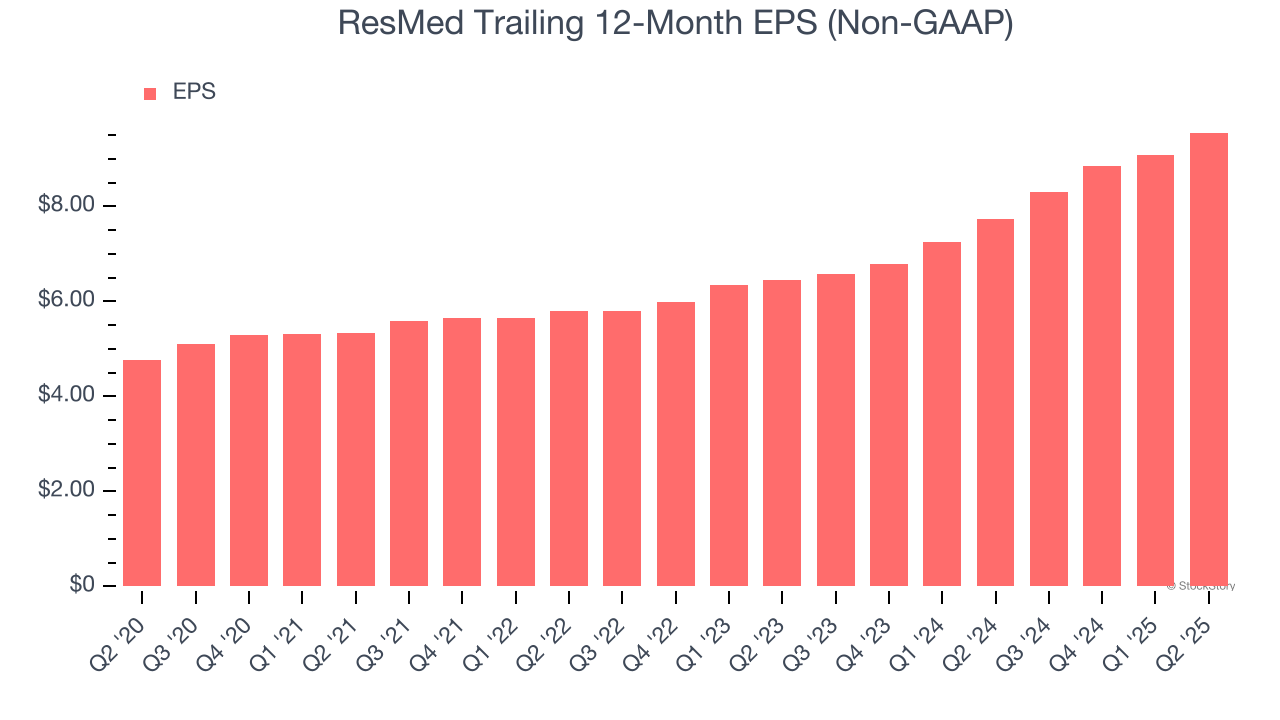
We can take a deeper look into ResMed’s earnings to better understand the drivers of its performance. As we mentioned earlier, ResMed’s operating margin expanded by 4.5 percentage points over the last five years. This was the most relevant factor (aside from the revenue impact) behind its higher earnings; interest expenses and taxes can also affect EPS but don’t tell us as much about a company’s fundamentals.
In Q2, ResMed reported adjusted EPS at $2.55, up from $2.08 in the same quarter last year. This print beat analysts’ estimates by 3%. Over the next 12 months, Wall Street expects ResMed’s full-year EPS of $9.55 to grow 8.6%.
Key Takeaways from ResMed’s Q2 Results
It was good to see ResMed narrowly top analysts’ revenue expectations this quarter. We were also happy its constant currency revenue narrowly outperformed Wall Street’s estimates. Overall, this print had some key positives. The stock remained flat at $270.94 immediately following the results.
Should you buy the stock or not? When making that decision, it’s important to consider its valuation, business qualities, as well as what has happened in the latest quarter. We cover that in our actionable full research report which you can read here, it’s free.
